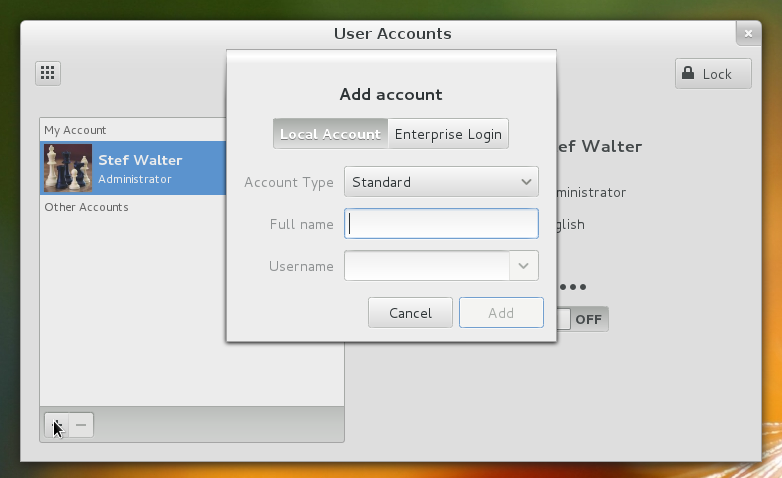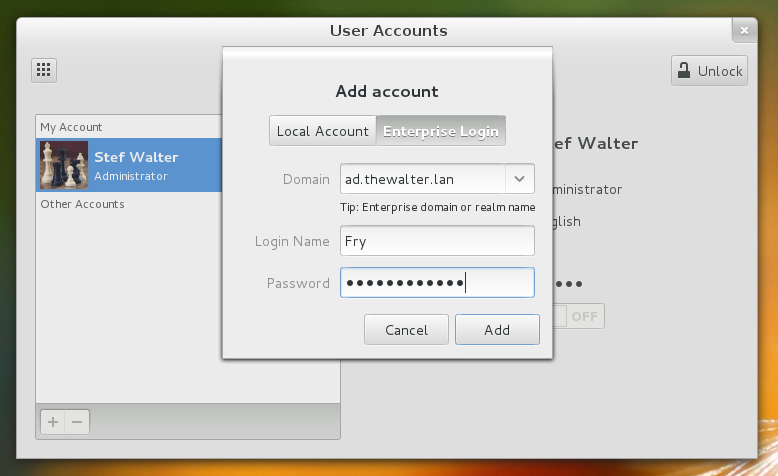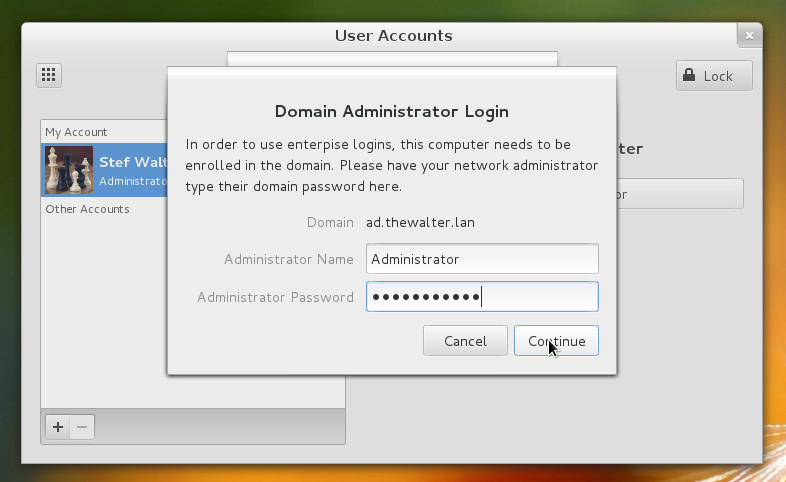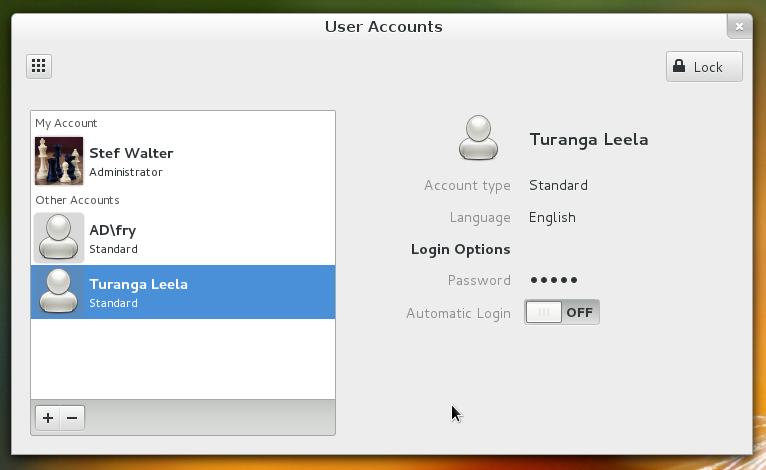Ray and I and some others have been working on making it easy to use Kerberos single sign on with GNOME 3.6. The feature itself isn’t super revolutionary. You sign in with your realm login (eg: your Active Directory user name and password) and then you can go on and use other services with that same kerberos sign in.
You could already do this, but setting it up was hard … and setting it up so it couldn’t be trivially hacked was even harder. If you just use pam_krb5 without ‘enrolling’ your machine an attacker can log in as anyone (woooooo). … and keeping it running without breaking down on you was even harder than that, especially for mobile environments.
So I’ve been working a lot on making this easy to setup; auto discovering the domain/realm, its settings and as much information as possible. Last week some user visible changes landed into gnome-control-center so here are some screenies.
You’ll notice the new Enterprise Login mode of the Add account dialog:

It lets you add users from an Active Directory domain or FreeIPA (soon) realm, and perhaps others in the future. Any domains we already know about are in the drop down. If this is the first time you’re using the feature, we try and automatically discover the domain from your DHCP DNS domain name. We automatically discover what kind of realm/domain we’re dealing with, all the other settings, and whether it’s valid or not.
Login details for the user are typed in, and then we bonk the Add button:

We try to be intelligent about validation and give good feedback:



If the domain requires administrative credentials to enroll the local machine, then we prompt for those. Active Directory on Windows 2003 and later don’t require admin creds by default. FreeIPA does.

And voila, the user is added. Only the users specifically added should be able to log in; there’s actually a bit of work to do on that, but that’s the plan. If an admin wants to enable any domain user to log in on the machine, then they can enroll the machine using the command line or admin tools. Both are supported, just not both in gnome-control-center.
Here I added two users, Fry and Leela. Not sure why one of them showed up with their full name and the other not. Something to fix…

Under the hood a the enrollment in realms is managed by a small DBus on-demand system service called realmd. realmd can also be driven using command line tools, which expose additional options.
It was important to me to make sure that the diagnostics are clear. So many of these tools throw up cryptic error messages without anywhere to go to figure out ‘Why?’. So we try hard to have user visible error messages, and then very clear diagnostic output on the console when performing these operations, that looks like:
* Looking up our DHCP domain
* Searching for kerberos SRV records for domain: _kerberos._udp.ad.thewalter.lan
* Searching for sub zone on domain: _msdcs.ad.thewalter.lan
* dc.ad.thewalter.lan:88
* Found AD style DNS records on domain
* Successfully discovered realm: AD.THEWALTER.LAN
Hmmm, what else … Ray’s been working on other parts of this: fixing the user accounts panel so it makes sense for non-local users. And making sure that the Kerberos tickets we get at login are correctly renewed and reauthenticated.
SSSD
These guys. Props to the SSSD guys. They’ve been working hard to make that daemon the perfect client for Kerberos/IPA/AD. It’s a modern clean implementation, and makes stuff like using your domain login when not attached to the domain really reliable and easy.
No mo’ NTP Time Syncing
I’ve been running around the kerberos stack trying to fix issues that cause configuration problems, fragility or just plain nastiness. For example:
For decades now kerberos implementations have pretty much required you to sync your time up with the kerberos server. It makes you roll your eyes that a security protocol relies so much on time for security, when the syncing of that time is almost always insecure. But oh well.
Anyway, for the good news. 15 years ago these guys figured out how to do kerberos without time syncing. And bit by bit their ideas have made it into kerberos implementations, but nobody new about it because the there were tons of fiddly bits that made assumptions about time syncing. I did a few last patches to sort out some issues, which have been accepted by MIT Kerberos.
Anyway, that was long enough, there’s lots more, but it’s starting to get boring …
Lots of patches are being merged as we speak, but if you want to test this stuff out right now, ping me on IRC #gnome-os on gimpnet, and I’ll help you get started.